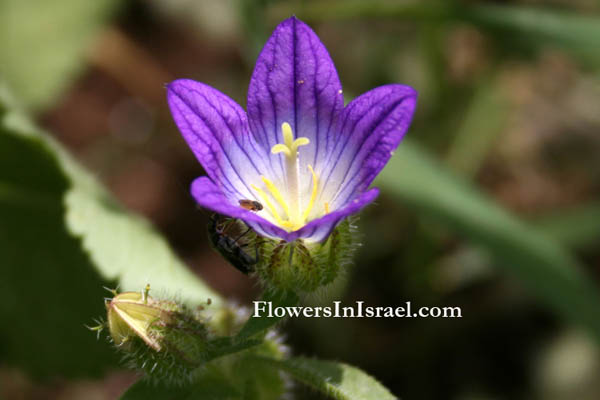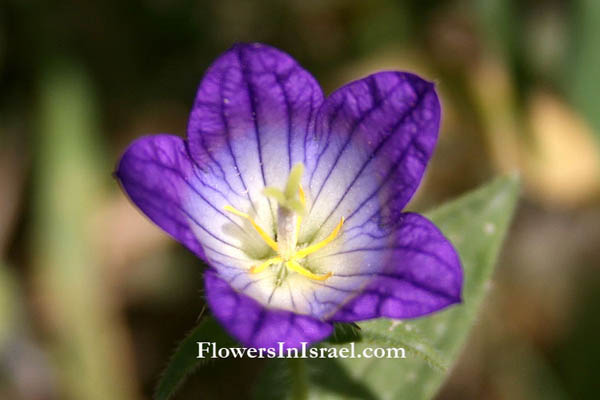Hebrew: פעמונית זיפנית, Arabic: زهرة الجرس الشوكية
| Scientific name: | Campanula strigosa Banks et Solander | |
| Common name: | Bellflower | |
| Hebrew name: | פעמונית זיפנית | |
| Arabic name: | زهرة الجرس الشوكية | |
| Plant Family: | Campanulaceae, פעמוניתיים |

|
| Life form: | Annual | |
| Stems: | Erect trailing or decumbent, glabrous, pubescent, or hirsute | |
| Leaves: | Alternate | |
| Flowers: | Purple, white | |
| Fruits / pods: | Capsule, elongated to ovoid, obovoid or round, with membranous walls; dehiscence by irregular pores at the bases or the sides; seeds minute, numerous | |
| Flowering Period: | March, April, May | |
| Habitat: | Batha, Phrygana | |
| Distribution: | Mediterranean Woodlands and Shrublands, Semi-steppe shrublands, Deserts and extreme deserts, Montane vegetation of Mt. Hermon | |
| Chorotype: | Med - Irano-Turanian | |
| Summer shedding: | Ephemeral |

Derivation of the botanical name: Campanula, campana campan, "bell" (church); Campanula (bell) shaped. strigosa, striga, a straight rigid closepressed rather short bristle-like hair; covered with strigae. The Hebrew name: pa'amonit, פעמונית, from pa'amon, פעמון, bell. The flowers look like bells.
|